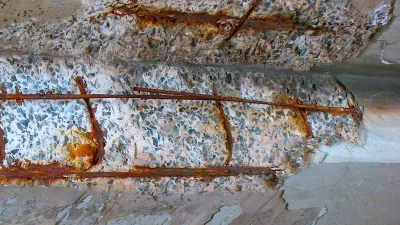With the CA state Senate's appropriation of $8 billion toward their $68 billion high speed rail plan, the spotlight turns to the other coast - the Northeast Corridor, with Amtrak's unveiling its updated, $151 billion plan. Both run 220 mph trains.
Dave Warner reports on the updated plan, originally released Sept. 28, 2010 showing a cost of $117 billion over the next 25 years.
Amtrak "predicted that super-fast train trips along the East Coast could be a reality by 2040. Travel times from New York to either Washington or Boston - both about 200 miles in distance - would also be slashed, to 94 minutes, the report said."
"The NEC (Northeast Corridor) region is America's economic powerhouse and is facing a severe crisis with an aging and congested multi-model transportation network that routinely operates at or near capacity in key segments," Amtrak's President Joe Boardman said in a statement.
An old item resurfaces - the canceled ARC tunnels.
It was almost two years ago when NJ Gov. Chris Christie announced that he would cancel the Access to the Region's Core twin-tunnel replacement project under the Hudson River to Manhattan that set off a flurry of reports on topics including paying back the federal government and possible replacement projects.
"Amtrak also said it is essential to the entire Northeast Corridor to build new tunnels connecting New York to New Jersey under the Hudson River. The newer plan would benefit both New Jersey Transit and Amtrak and would use a remodeled Penn Station, said Amtrak spokesman Steve Kulm."
Thanks to The Atlantic Cities
FULL STORY: Amtrak plans 37-minute train from New York to Philadelphia by 2040

Study: Maui’s Plan to Convert Vacation Rentals to Long-Term Housing Could Cause Nearly $1 Billion Economic Loss
The plan would reduce visitor accommodation by 25,% resulting in 1,900 jobs lost.

North Texas Transit Leaders Tout Benefits of TOD for Growing Region
At a summit focused on transit-oriented development, policymakers discussed how North Texas’ expanded light rail system can serve as a tool for economic growth.

Why Should We Subsidize Public Transportation?
Many public transit agencies face financial stress due to rising costs, declining fare revenue, and declining subsidies. Transit advocates must provide a strong business case for increasing public transit funding.

How to Make US Trains Faster
Changes to boarding platforms and a switch to electric trains could improve U.S. passenger rail service without the added cost of high-speed rail.

Columbia’s Revitalized ‘Loop’ Is a Hub for Local Entrepreneurs
A focus on small businesses is helping a commercial corridor in Columbia, Missouri thrive.

Invasive Insect Threatens Minnesota’s Ash Forests
The Emerald Ash Borer is a rapidly spreading invasive pest threatening Minnesota’s ash trees, and homeowners are encouraged to plant diverse replacement species, avoid moving ash firewood, and monitor for signs of infestation.
Urban Design for Planners 1: Software Tools
This six-course series explores essential urban design concepts using open source software and equips planners with the tools they need to participate fully in the urban design process.
Planning for Universal Design
Learn the tools for implementing Universal Design in planning regulations.
City of Santa Clarita
Ascent Environmental
Institute for Housing and Urban Development Studies (IHS)
City of Grandview
Harvard GSD Executive Education
Toledo-Lucas County Plan Commissions
Salt Lake City
NYU Wagner Graduate School of Public Service



























